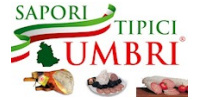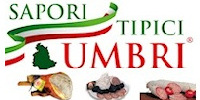Once just a castle that stood along the Via Flaminia, the village of Sant'Eraclio takes its name from a Roman soldier called Eraclius who was martyred here in 251AD after converting to Christianity. The castle is still inhabited today.
In the 7th century a small group of houses gathered around a church that had been built here. A watch tower that also acted as a refuge for the villagers was built in the 13th century.
Nallo Trinci, who ruled over Foligno from 1305 to 1321, erected a castle with the help of the local villagers who supplied workforce and stones. When construction was finished in 1320, Nallo moved here with his wife Chiara. After Nallo's death the castle was inherited by his brother Ugolino I Trinci. In 1421 Corrado Trinci stationed a garrison here in charge of exacting the tolls from those passing along the Via Flaminia. In 1429 the role of exactor was taken up by Pietro Cola Molani of Bevagna.
After the Trinci family fell from power the castle was occupied by a salaried lord, two consuls elected by Foligno and two bailiffs.
By 1626 the village numbered over a thousand people. In 1750 Sant'Eraclio rebelled against Foligno and its heavy taxes, entering into a court case in Rome that ended towards the close of the century with its reintegration under the administration of Foligno on condition that it retained its own council made up of 70 people, responsible for electing magistrates for the comune.
During the 1798 Roman Republic the council elected its own bailiffs with the authority of the Pope. The comune lost its independence definitively in 1865.
History of the Carnival of Sant'Eraclio
The Carnival at Sant'Eraclio was started in 1542 by the Olivetani friars of Mormonzone, from a nearby convent that has since been abandoned. The idea was that the people should have their own merry-making in the streets, as an answer to the parties held by the nobles behind the closed doors of their palaces.
Period descriptions of the carnival tell of a parade of oxen-drawn carts decorated with branches and flowers, accompanied by people dancing and singing to the music of flutes and trumpets played by those standing on the carts.
In the 17th century the Catholic Church banned the event on the grounds that it was sinful. The Papal administration relaxed somewhat a century later and permitted the carvival to resume on certain conditions. At the same time Sant'Eraclio was elected “Carnival town” in that it was the only place in the entire region surrounding Foligno that could hold a Carnival. From this moment onwards the formula of the Carnival here was repeated every year until the Second World War.
Masks play tricks on other masks either alone or in groups. Spectators come from all over the surrounding countryside to watch the Masquerade on Shrove Tuesday. Post-war security measures forbade anyone to wear a mask in public, with the result that the Masquerade ended within two or three years.
A group of notables started the Carnival again in 1954 as a parade of carts, but it was again destined to be short lived.
In 1961 the local priest organised the Carnevale dei Ragazzi di Sant'Eraclio organising committee, after which the Carnival has been held annually.
Today the carts are made from paier-mache' and parade through the streets to the sound of dancing and singing, accompanied by masks that play tricks exactly as they did when the Carnival first began.
The organising committee organises guided visits to the workshops that make the allegorical carts, open chiefly to primary and secondary school children. It is however also possible to organise guided tours with groups of adults.
The visit consists of illustrating the various phases in the building of a cart and in the making of a mask.
Information: Sante Piermarini Tel. (+39) 0742.67.118
Raffaele Tosti 338.954.6682
www.ilcarnevale.net
Rocca Deli is near Sant'Eraclio, for anyone wishing to savour the feeling of spending a night in a real fortress 650 metres above sea level. Built in the year 1000, the tavern can hold between 20 and 30 people.
Rocca Deli is at Foligno, loc. Scandolaro. Tel. (+39) 0742.65.12.49
335.778.3400
Our network:
Sunday 21 December 2025
Sant'Eraclio, Carnival in a Castle© Copyright 2001-2025 by UmbriaOnline.com |
|
Foligno News |








